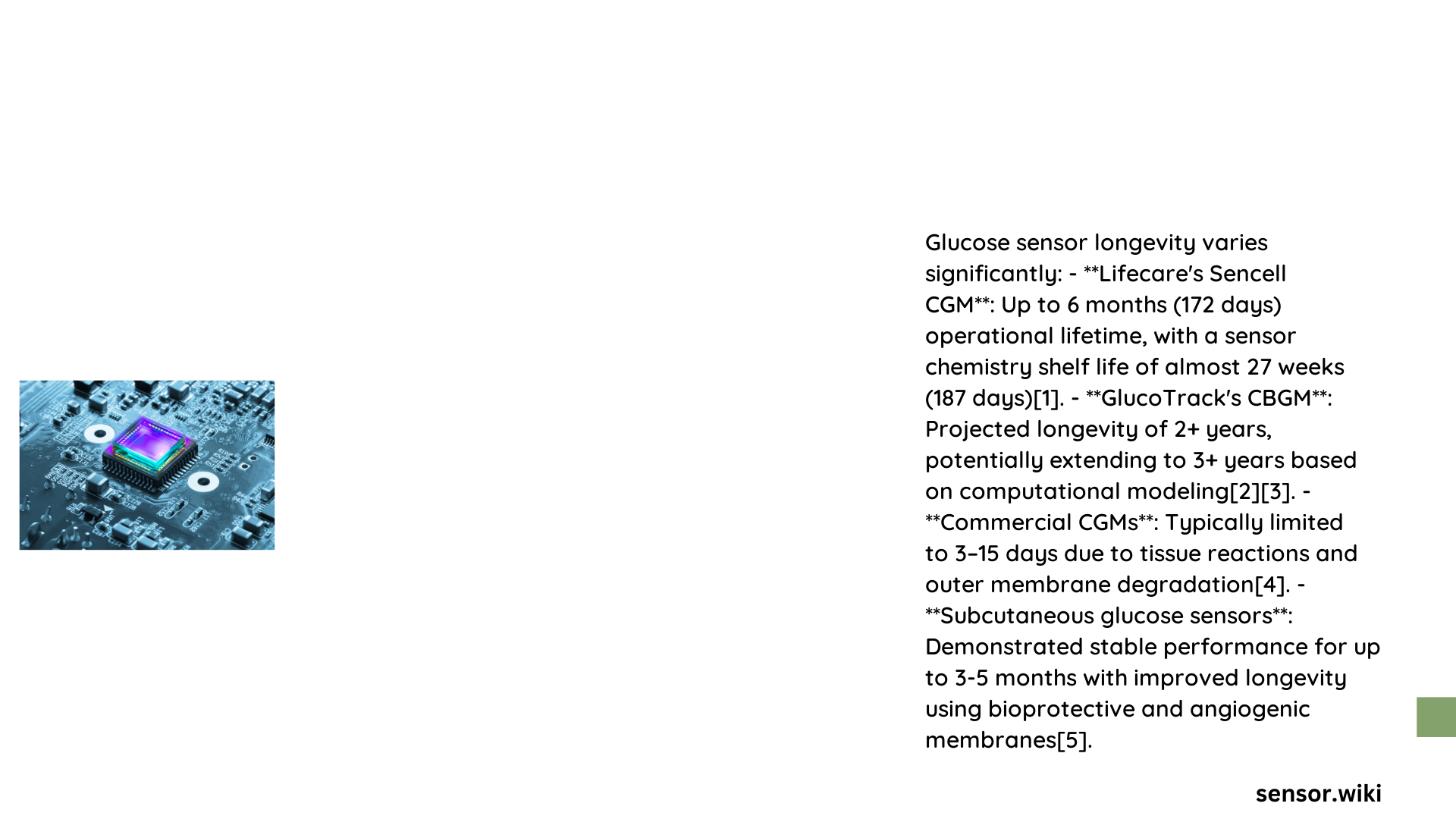Glucose sensor longevity is a critical factor for individuals managing diabetes, determining the reliability, cost-effectiveness, and overall performance of continuous glucose monitoring (CGM) systems. Modern CGM devices offer varying lifespans, ranging from 7 to 180 days, with different maintenance requirements, environmental sensitivities, and technological capabilities that directly impact their durability and user experience.
What Determines Glucose Sensor Lifespan?
Factors Influencing Sensor Performance
Glucose sensor longevity depends on multiple interconnected factors:
- Technological Design
- Sensor material composition
- Electronic circuit durability
-
Manufacturing precision
-
Environmental Conditions
- Temperature variations
- Humidity levels
-
Physical stress and movement
-
User Interaction
- Proper insertion technique
- Maintenance practices
- Calibration requirements
How Long Do Different Glucose Sensors Last?

| Device | Sensor Lifespan | Calibration Required | Replacement Cost |
|---|---|---|---|
| Dexcom G6 | 10 days | No | $440/month |
| Dexcom G7 | 10 days | No | $500/month |
| FreeStyle Libre 2 | 14 days | No | $170/month |
| FreeStyle Libre 3 | 14 days | No | $160/month |
| Medtronic Guardian | 7 days | Yes | $240/month |
| Eversense | 180 days | No | $1,350/180 days |
What Environmental Factors Impact Sensor Durability?
Temperature and Humidity Challenges
Extreme environmental conditions can significantly reduce glucose sensor performance:
- High Temperature:
- Accelerates electronic component degradation
- Potentially reduces sensor accuracy
-
Recommended storage between 50-86°F (10-30°C)
-
High Humidity:
- Increases risk of corrosion
- May compromise sensor electrical connections
- Can cause premature sensor failure
How Can Users Maximize Glucose Sensor Longevity?
Best Practices for Sensor Maintenance
- Proper Storage
- Keep devices in cool, dry environments
- Avoid direct sunlight
-
Use protective cases
-
Careful Handling
- Minimize physical stress
- Follow manufacturer insertion guidelines
-
Clean attachment areas regularly
-
Battery Management
- Monitor transmitter battery levels
- Charge or replace as recommended
- Follow manufacturer charging instructions
What Are the Cost Implications of Sensor Replacement?
Financial Considerations
The annual cost of glucose sensors varies significantly:
- Lowest Cost Option: FreeStyle Libre 3 (~$1,920/year)
- Mid-Range Option: Dexcom G6/G7 (~$5,300/year)
- Highest Cost Option: Eversense (~$2,700 + transmitter)
What Technological Innovations Enhance Sensor Longevity?
Emerging Trends
- Self-Calibrating Sensors
- More Robust Material Technologies
- Enhanced Water and Temperature Resistance
- Longer-Lasting Battery Systems
Conclusion
Understanding glucose sensor longevity requires comprehensive knowledge of technological, environmental, and user-related factors. By selecting appropriate devices, maintaining proper care, and staying informed about technological advancements, users can optimize their continuous glucose monitoring experience.
